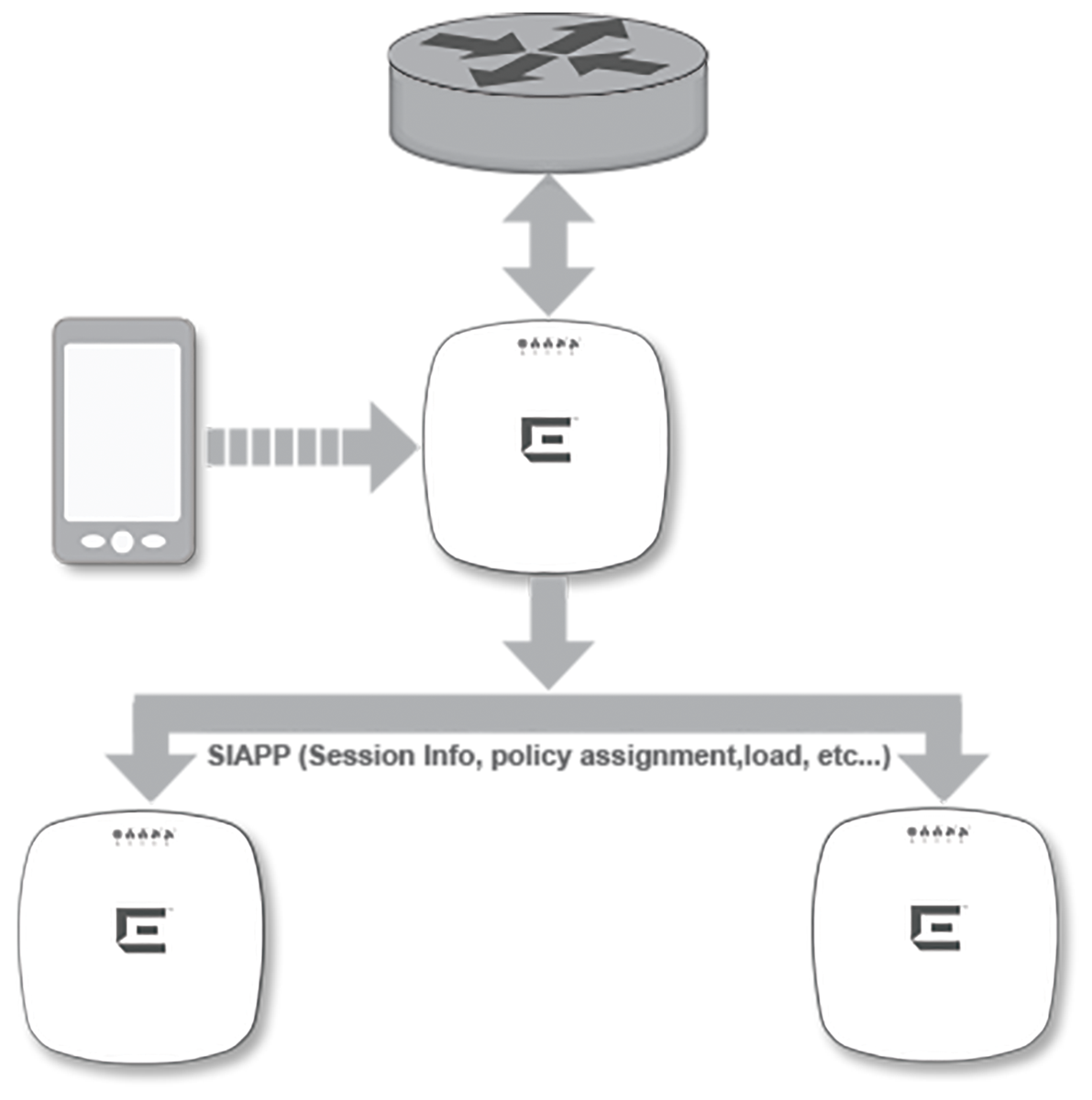A site is a collection of access points (APs) that exchange information about their client hosts to facilitate seamless roaming between APs. Sites can have associated cloud-managed switches. Typically a site will be mapped to a location. For example all the cloud-managed APs and switches on the floor of a building might be treated as one site.

Note
A site that contains ExtremeWireless WiNG APs will not contain ExtremeWireless APs. Also, a site will not combine ExtremeWireless WiNG 5 and 7 model access points. The configuration options that display depend on the type of APs deployed at the site.Site definition and corresponding services are managed through the ExtremeCloud user interface. A default site is created for you when your first purchase an entitlement. When your APs discover ExtremeCloud, they are added to this default site. Services are assigned when an AP discovers the cloud service. You can reassign the APs to another compatible site, but an AP can be assigned to one site only. There is a maximum limit of 100 APs per site.
ExtremeWireless APs in a site exchange user information using SIAPP, a specialized multicast-based protocol. ExtremeWireless WiNG APs in a site exchange information using MiNT. MiNT and SIAPP are specialized administration protocols. You must allow MiNT or SIAPP traffic on the segment hosting your APs.
SIAPP is a multicast protocol that sends packets to 224.0.1.178, Port: 3517. (Switches do not participate in SIAPP, although they may forward SIAPP frames as they would other multicast protocols.) Session information is shared for all users states (such as authentication state, assigned policies) and band steering.

Layer 2 MiNT packets use the ether-type 0x8783. Layer 3 MiNT packets use UDP port 24576.
Without L2 connectivity between ExtremeWireless APs in a site, roaming and site ACS will not work properly. The APs within a site operate within a single RF domain and therefore must have L2 connectivity to function properly.
It is a best practice to use a single VLAN for all of the APs in a site. However, if you prefer to distribute the APs within a site over multiple VLANs, then you must allow either routing or forwarding of SIAPP multicast between those VLANS.
No additional grouping is needed for load balancing.
If you need to deploy APs on different subnets and want to allow roaming between the APs, then you must configure your routers and switches to allow SIAPP or MiNT messages between the subnets.